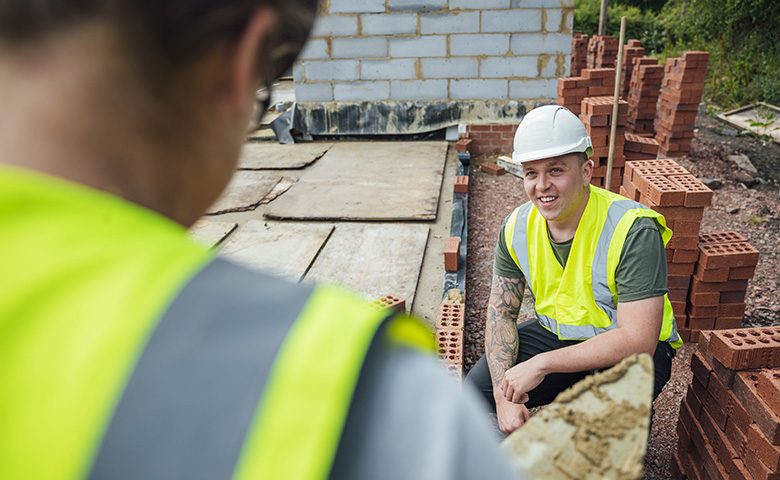Safety does more than just prevent accidents in a company (although admittedly, that part of safety is pretty important). A good safety program can improve culture, quality, productivity, communication and positively impact the bottom line.
But much like anything worth doing, some effort is required to get safety to improve production and other issues. To develop a natural culture of safety, you first need to show that you care for your employees’ well-being and constantly reinforce safe behaviors. Here are a few ways to do exactly that.
1. Promote safety and well-being
When workers feel that their safety and well-being are truly valued by their employer, it makes them more confident about their jobs. By feeling supported while working, they are more likely to stay focused and on task throughout the workweek. For a safety mindset to fully take root in a company, workers need to look beyond the safety rules and procedures to the mental factors (like rushing, fatigue, frustration and complacency) that might cause them to forget or forgo those procedures.
Safety doesn’t end with a completed safety training course, and improvements must start at the top and work down. Supervisors must lead by example. It’s not just about taking notice of issues but of taking the extra step to point them out as they’re occurring and encouraging floor staff to watch out for each other. This will teach workers to be constantly vigilant and point out problems as they occur—or even beforehand—which will contribute to the culture of constant safety awareness.
2. Improve toolbox talks
There are few better ways to increase safety awareness than delivering toolbox talks. They provide an opportunity to have a frank discussion with workers about worksite safety and any issues that need to be addressed. Toolbox talks help with employee engagement, safety compliance and when they’re completed regularly, they help to build a positive safety culture.
But not all toolbox talks are created equal. A good toolbox talk should be engaging but brief. The topic should be specific to the worksite and applicable to those in attendance at the meeting. Once the big on-site issues have been addressed, it can be hard to find relevant topics, but there are many topics like weather, national days, training refresher that can make the talks valuable. Check out these suggestions for 12 months of toolbox talk topics.
3. Reinforce good habits
Habits are known to make up a huge portion of human behavior. Bad habits are often an issue in safety, but the good news is that people are just as likely to rely on positive habits as they are on negative ones. The key to any sustained improvement in safe behavior is to build better habits.
One way to support this process is to be understanding of workers. Positive reinforcement will help build relationships with workers and they will associate doing things safely with positive interactions with their superiors. Yelling or using scare tactics can correct behavior once or twice, but it won’t do anything in the way of creating good habits.
Good habits can also be effective against complacency. Certain tasks, like routine safety checks, can be done practically automatically and strengthen safety culture in the workplace.
4. Focus on the “why”
The most effective reasons for workers to change their behavior stem from their lives outside of work. They will always put the needs of their family and friends before their own. Therefore, strive to demonstrate how safe behavior could benefit that aspect of their life, including personal activities, hobbies, and recreational time. You want your employees to be conscious of safety issues when at home or out with their families—and after a while, staying safe will become a lifestyle choice.
Enforcing positive safety habits ultimately extends beyond the workplace and into the private lives of employees. Creating a positive environment reinforces safe behavior and helps internalize it, strengthening relationships, good habits, and healthy routines. Then, it expands outward into an idea of 24/7 safety, both on the job and off—so no matter where employees find themselves, they will be mindful and alert.
5. Reduce stress in the workplace
Stress can manifest in many different ways. Although stress can be an almost constant companion in many workplaces, it doesn’t make it acceptable. Stress is more likely to occur when workers feel rushed or frustrated, and when people are stressed, they pay less attention, the risk of injury increases significantly and they may experience higher levels of fatigue. Because of this, people are more prone to becoming complacent and slipping back into old, unsafe habits when stressed, or making mistakes because they don’t have their mind on task.
Take a look at when injuries occur most often on your site. If they tend to happen when employees are rushing, frustrated, tired or otherwise stressed, then you should consider working on the human factors impeding safety and the stress factors which contribute to the problem. Teach employees how to manage stress when it arises by providing training on addressing human factors. You can help them identify stress with these handy checklists and stress resources.
By focusing on these five ways of reinforcing safe behavior, you’ll be well-set to utilize safety well-beyond accident reports. Change won’t happen overnight, but by taking a dedicated and consistent approach to improving safety, you’ll not only see a reduction in incidents but are likely to have a positive impact on production and safety too.

